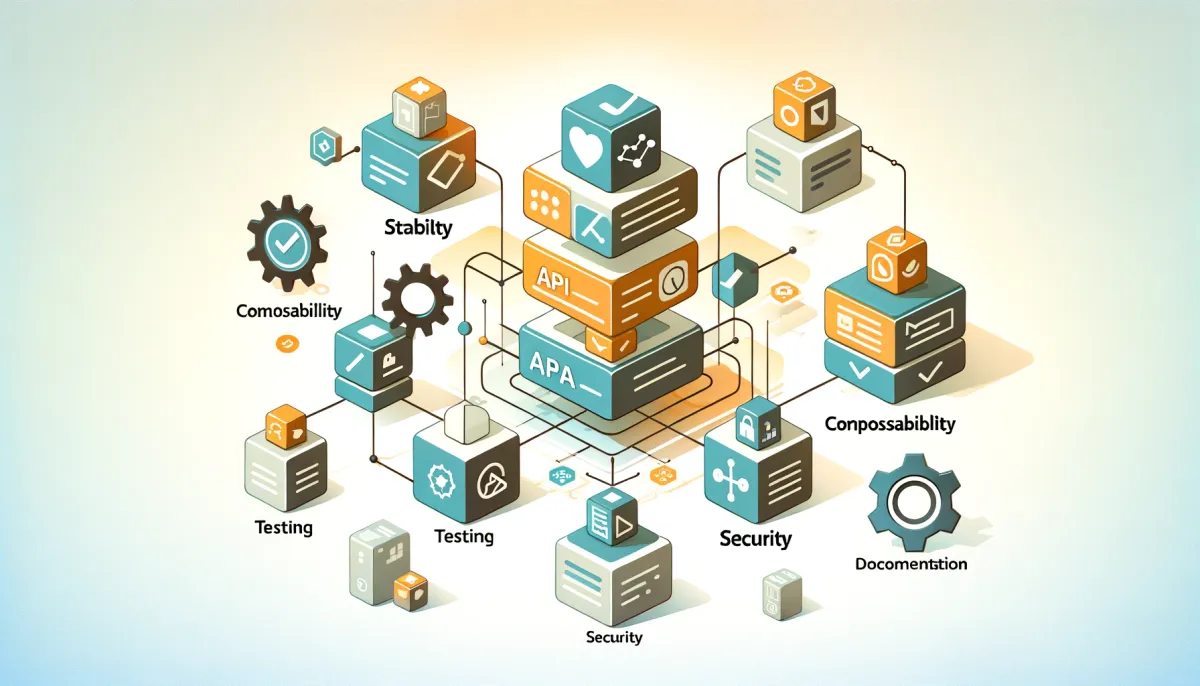API Design Practice: A Practical Guide to API QA and Designing Stable, Coherent, and Composable Business Resource APIs

APIs (Application Programming Interfaces) are the backbone of modern software systems, enabling different software components to communicate and work together. Designing stable, coherent, and composable business resource APIs is crucial for creating reliable and maintainable software. In this blog post, we will explore best practices for API design, focusing on API Quality Assurance (QA) and practical guidelines to achieve stability, coherence, and composability.
Understanding API Design Principles
Before diving into practical guidelines, it's essential to understand the fundamental principles of API design:
- Stability: An API should remain consistent over time to avoid breaking existing clients.
- Coherence: An API should be intuitive and predictable, with clear relationships between resources.
- Composability: An API should allow resources to be combined in flexible ways to support different use cases.
API Quality Assurance (QA)
API QA is the process of ensuring that APIs meet the required quality standards. It involves various testing methodologies to validate functionality, performance, security, and usability.
Key QA Practices
- Unit Testing: Validate individual components of the API.
- Integration Testing: Ensure that different parts of the API work together as expected.
- Performance Testing: Measure the responsiveness and stability under load.
- Security Testing: Identify and mitigate potential security vulnerabilities.
- Usability Testing: Ensure the API is user-friendly and meets the needs of its consumers.
Designing Stable APIs
Stability in API design ensures that changes do not break existing functionality. Here are some practices to achieve stability:
- Versioning: Use versioning to manage changes. Common strategies include URL versioning (e.g.,
/v1/resource) and header versioning. - Backward Compatibility: Ensure that new versions of the API are backward compatible. Avoid removing or renaming existing endpoints and fields.
- Deprecation Policies: Clearly communicate deprecation plans to users and provide sufficient time for them to migrate to newer versions.
Creating Coherent APIs
Coherence in API design makes the API intuitive and easy to use. Here are some guidelines to achieve coherence:
- Consistent Naming Conventions: Use consistent and meaningful names for endpoints, parameters, and responses. Follow naming conventions like RESTful standards.
- Resource Modeling: Design resources that accurately represent business entities and their relationships. Use hierarchical structures where appropriate.
- Standardized Responses: Use standard response formats (e.g., JSON) and structure responses consistently across endpoints.
Building Composable APIs
Composable APIs allow developers to combine resources in flexible ways. Here’s how to design for composability:
- RESTful Design: Follow REST principles to create stateless APIs with clear resource representations.
- Filtering, Sorting, and Pagination: Implement filtering, sorting, and pagination to allow clients to retrieve subsets of data.
- Hypermedia Links: Use hypermedia links (HATEOAS) to provide navigable relationships between resources.
Practical Steps for API Design
Let’s walk through a practical example of designing an API for a simple e-commerce system. The system includes resources such as products, orders, and customers.
Step 1: Define Resources and Endpoints
Identify the main resources and their endpoints:
- Products:
/products,/products/{id} - Orders:
/orders,/orders/{id} - Customers:
/customers,/customers/{id}
Step 2: Model Relationships
Define relationships between resources:
- A
customercan have multipleorders. - An
ordercan contain multipleproducts.
Step 3: Implement CRUD Operations
Design endpoints to support CRUD (Create, Read, Update, Delete) operations:
GET /products: Retrieve a list of products.POST /products: Create a new product.GET /products/{id}: Retrieve a specific product.PUT /products/{id}: Update a product.DELETE /products/{id}: Delete a product.
Step 4: Add Filtering, Sorting, and Pagination
Enhance the GET /products endpoint with filtering, sorting, and pagination:
GET /products?category=electronics: Filter products by category.GET /products?sort=price: Sort products by price.GET /products?page=2&limit=10: Retrieve the second page of products, with 10 products per page.
Step 5: Implement Hypermedia Links
Include hypermedia links in responses to enable easy navigation:
{
"id": 1,
"name": "Laptop",
"category": "electronics",
"price": 1000,
"links": {
"self": "/products/1",
"related": {
"orders": "/orders?product_id=1"
}
}
}
Conclusion
Designing stable, coherent, and composable business resource APIs requires careful planning and adherence to best practices. By focusing on API QA, versioning, resource modeling, and RESTful design principles, you can create APIs that are robust, easy to use, and flexible enough to meet diverse business needs. Following the practical steps outlined in this guide will help you design effective APIs that enhance the functionality and user experience of your applications.


